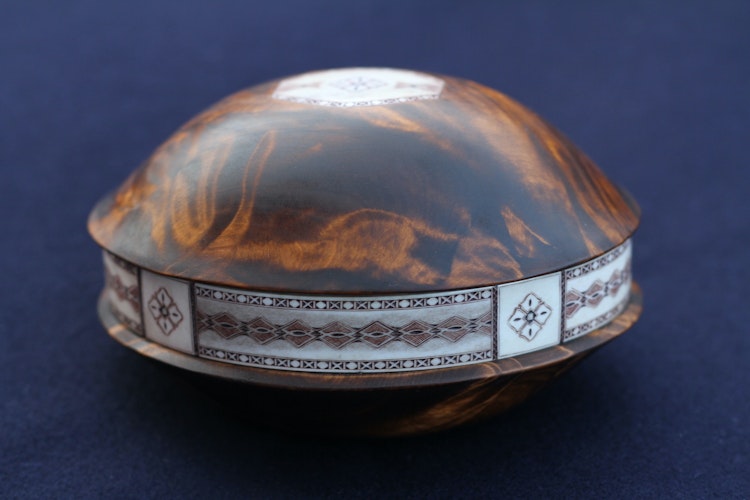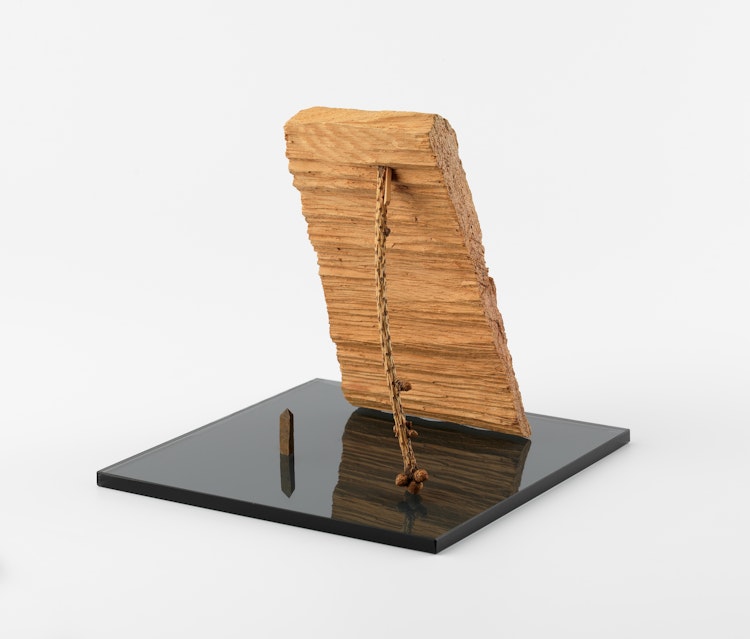

Gry-Kristina Fors Spein
In this essay curator and duojár Gry-Kristina Fors Spein reflects on the Sámi concept of duodji as a starting point for artistic practice.
Sámi Dáiddamágasiidna – Samisk Kunstmagasin (SDM), which is part of the consolidated museum Riddo Duottar Museat, is an art collection located in Karasjok and owned by the Sámi Parliament. SDM administers the largest collection in the world of Sámi contemporary art. It has also built a significant collection of duodji and art and craft by other Indigenous peoples. In 2018, its holdings exceeded more than 1,000 works. Many of these are classified as dáiddá duodji, and they originate from various areas in Sápmi. Their execution reflects a high level of professional achievement, so much so that they can be perceived as bordering between the categories of traditional applied art and contemporary art.
The Sámi concept of duodji encompasses many types of hand-crafted objects, both functional and conceptual, which can be made in homes and workshops or in small-scale industries. Duodji
also means ‘creative activity’ in a very wide sense. This is one of those words that is difficult to translate into other languages because it applies to so many techniques, materials, and practices. The Swedish philosopher Tore Nordenstam cautions us to be careful when trying to translate words unambiguously from one language to another.1 The French philosopher Maurice Merleau-Ponty would surely agree, for he claims that the meaning of a text in one language can never be fully translated into another language.2 A complete translation can also be difficult to achieve because a linguistic expression can have emotive connotations that simply do not allow themselves to be translated.

Duodji is the work of hands, and through it, tradition, immaterial cultural heritage, stories, and spirituality can all be conveyed through what is made. Duodji
practices do not necessarily need to be linked to written or oral language. Many Sámi practice duodji in many different ways and at different levels. Duodji
is part of everyday life in thousands of households, especially amongst reindeer herders who need functional objects, clothing, and shoes that wear well outdoors all year round. Traditional Sámi clothing has developed over many generations and been adapted to its purpose and the alternating climactic conditions in Sápmi. And even though many Sámi still wear traditional clothing every day, all year round, it cannot be bought in stores.
Duodji is the work of hands, and through it, tradition, immaterial cultural heritage, stories, and spirituality can all be conveyed through what is made.

A duojár is a virtuoso in the field of art and cultural craft – he or she possesses a high degree of practical and experience-based knowledge. This knowledge can be passed down through generations and acquired through personal experience. According to duojár Petteri Laiti, at least ten years of training are required before one can rightly call oneself a duojár. The person must be highly proficient, have the right way of looking at things, possess Sámi cultural competence, have developed a personal perspective, and, as stated, have a wide range of knowledge. Furthermore, a duojár should know about natural conditions, for instance, about when and how natural materials should be gathered. There can also be a spiritual dimension to take into account when harvesting materials or in the creative process itself. Traditional knowledge is usually passed down in the home, from one generation to the next, or from a duojár to an apprentice. Terminology is a rich and important part of the knowledge tradition. Sámi society considers duodji to be as important a carrier of culture as the Sámi language.
Differences in living conditions and natural surroundings have resulted in local variations in duodji practice. Material and technical developments in the last decades have led to great changes in production processes and material choices.
Duodji objects can be understood as stories. Each object carries a story that can reveal where the maker is from, his or her family connections, or whether or not the owner is married. Such stories are reflected in the ornamentation on knives, shoe laces, and clothing. Duodji practitioners share their own stories and those of their forefathers through their activities, practical experience, and knowledge. This is how the traditional knowledge is perpetuated.


In his book Den levende erfaring (‘The Experience That Is Alive’), Professor Jens Ivar Nergård from the University of Tromsø writes that Sámi stories belong to a practical and oral knowledge tradition.3 These stories function as the backbone for Sámi practical knowledge, for they bind together traditions, insights, and a form of living. Nergård sees stories as living material that should serve diverse purposes, and which are important for establishing a shared understanding and collective memory of Sámi traditions and the interpretation of events and event sequences. Sometimes the stories offer a moral parable or advice on how one should live; other times they preserve concrete experience and genuine practical insight and knowledge. As stated, they bind together traditions, insight, and a form of living.

Many Sámi artists began their career as duodji practitioners. Sámi contemporary art is often influence by duodji, which is an important part of the immaterial cultural heritage. For several of these artists, the experience and knowledge of duodji has contributed importantly to their understanding and artistic development. This is evident in many works by the eminent Sámi artists Iver Jåks and Rose Marie Huuva.